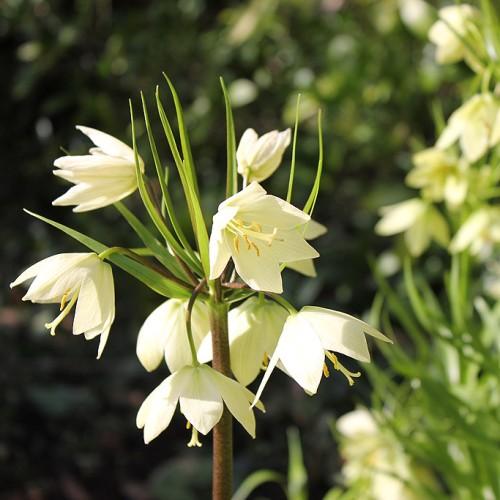
fritillary
Fritillaria raddeana
Cycle:
Perennial
Watering:
Average
Hardiness Zone:
5 - 8
Flowers:
Flowers
Sun:
Full sun,part shade
Leaf:
Yes
Growth Rate:
Low
Maintenance:
Moderate
Salt Tolerant:
Yes
Care Level:
Medium
watering
Fritillaria raddeana should be watered lightly every 1 to 2 weeks, depending on the type of soil in which it is planted. When watering, make sure to moisten the soil evenly, allowing the water to soak in thoroughly before adding more. Avoid leaving the plant sitting in water, as this can lead to root rot. In the hot, dry summer months, it may require more frequent watering, every 5 to 7 days. During the winter months, it can be watered every 3 to 4 weeks.
sunlight
Fritillary (Fritillaria raddeana) requires full sun in order to grow and thrive in most climates. This plant usually prefers 6-8 hours of direct sunlight daily, but can tolerate some shade as well. The amount of light required can depend on the plant's location and the time of year. In warmer climates, this species can tolerate more sunlight and may even prefer full sun all day. In cooler climates, however, it is best to provide dappled shade or part shade during the hottest hours of the day. Additionally, cooler temperatures can reduce the need for direct sunlight. In any case, it is important to avoid exposing this plant to temperatures below -10°C (14°F).
pruning
Fritillary (Fritillaria raddeana) should be pruned at the end of winter or early spring, just before the new growth starts. Pruning should be very light to maintain the natural appearance of the plant. The overgrown stems should be removed up to about 2-thirds of their original length. Care should be taken to keep the clumps close and not to remove too much foliage. If removal of completely dead stems is necessary, do that first. Afterwards, cut back remaining stems to below the basal leaves. This will encourage additional basal growth. Finally, deadhead the fading flowers before the seed heads swell.
